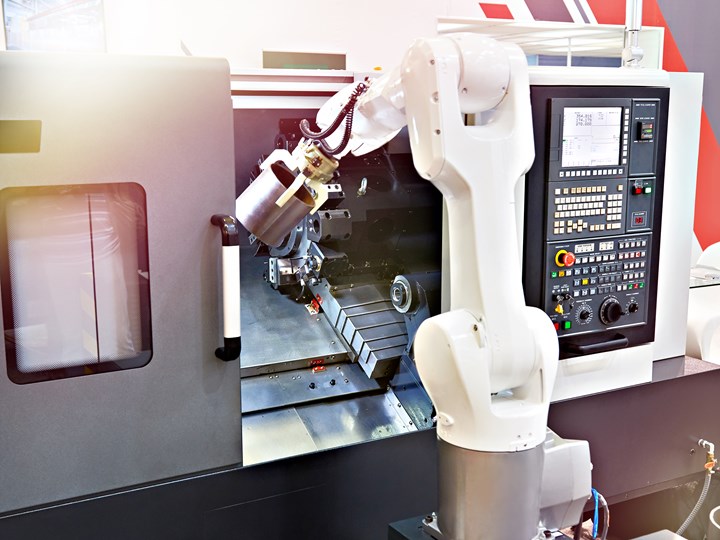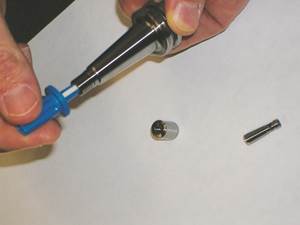The Effects of Automation on Manufacturing
Companies that are not currently using automation in their manufacturing processes should be considering it.

American manufacturing has weathered through some dark times over the last few decades, but recently it has been making a comeback. Part of its success can be attributed to the rise we are seeing in automation, robotics and advanced manufacturing. Today, manufacturing, machine tools and automation go hand in hand.
With the labor force in manufacturing declining and with ever-increasing wages in the U.S., many manufacturing companies turn to other countries for their production needs. But automation is slowly changing that mindset and the ability for U.S.-owned companies to be competitive. Automation in manufacturing is no magic wand, but it can certainly level the playing field. Companies that are not currently using automation in their manufacturing processes should definitely be considering it.
What exactly is automation? How is it helping our industry? How can it help you? It is defined as the use of largely automatic equipment in a system of manufacturing or other production processes.
Many people think of automation on a large scale; historically, that would be in environments such as the big three (Ford, Chrysler and GM). But automation can be added to machine tools in many other, more affordable ways as well. A shop can start with basic automation such as adding a bar feeder to a lathe and build from there, perhaps all the way to a complete, automated cell that handles the part from start to finish. Automation can include robots that load and unload machines or gantry systems that are mounted to the machine tool or as a stand-alone. Conveyors can move material from one place to the next with flip or turn stations that rotate a part for the next operation. The bottom line is that by automating a production facility, a shop can increase production, reduce cycle times, improve quality, reduce manufacturing lead times, create a safer workplace and become more competitive.
But certain challenges should be considered when implementing automation in the shop. Some of these concerns include floor space, cost, deciding what to automate, finding skilled employees and employee resistance.
Generally, the benefits to using automation outweigh the challenges, especially when it can increase efficiency and production. It’s realistic to see up to a 30-percent increase in production by using automation in the manufacturing process. A more efficient production process gives way to increased output and allows manufacturers in the U.S. to be more competitive. The Association for Advancing Automation stated in a “60 Minutes” segment entitled “March of the Machines” that American manufacturing’s embrace of robotics will ensure a new manufacturing renaissance in this country. I happen to believe this to be true, and I think manufacturers are embracing robots and their progressive technology.
On the other hand, some employees may feel like they will lose their job because of automation. This fear is far from being true as automation opens the door for employees to advance to new opportunities with the creation of new positions. Downtime in manufacturing creates a snowball effect that impacts all levels of production. When equipment fails, it needs to be back up and running as quickly as possible. The reliance on automation creates more demand for skilled maintenance and service technician jobs.
Matt Highfield, a director at Deloitte Consulting LLP who specializes in global location strategy, makes a valid point when he says factories of the future are going to be “lower touch” and more automated. They will have higher capital expenditures with a lower labor component, which will also translate to higher skills and higher paying jobs. In theory, those factories will be more efficient and will be able to produce more, as more automation is introduced.
Today, almost 56 percent of global companies do some type of automation. Automation has made us stronger, faster and more competitive and future possibilities are limitless. Now is the time to decide—is automation right for you? I say yes.
Automation will help provide a competitive edge/advantage, but it will not fix a production problem. In the metal machining industry, when a process is out of control or chip control is an issue, automation will not resolve those problems. So, as you do your homework and decide to automate one, two or several machines, make sure the machining process is solid.
Contributor
Jonathan Grigg is an applications engineer at Okuma America Corp.
Contact: 704-588-7000, okuma.com
Related Content
Why Are We Writing About a Shop Making Custom Baseball Bats?
I recently learned about a 153-year-old manufacturer that has produced billions upon billions of precision, metal pins which started another business making one-off wooden baseball bats. (Like I asked it to do for me and you’ll see at this year’s Precision Machining Technology Show). Here I explain why it’s worth the time to read that article.
Read MoreMicro-Drilling: 9 Questions to Answer Before Beginning
Applications for micromachining continue to grow. Successful machining with small tools calls for a different set of process skills on the shop floor.
Read MoreCraftsman Cribsheet No. 128: Why Do Machinists Say Tenths Instead of Ten Thousandths?
In machinist parlance, a tenth is a tenth of a thousandth, not a tenth of an inch.
Read MoreImportant Machining Factors of Carbon Steels
Learn the factors that contribute to carbon steels and their machinability as well as the 1214 steels, 1215 steels and 1018 steels, other grades, and more.
Read MoreRead Next
A Tooling Workshop Worth a Visit
Marubeni Citizen-Cincom’s tooling and accessory workshop offers a chance to learn more about ancillary devices that can boost machining efficiency and capability.
Read More5 Aspects of PMTS I Appreciate
The three-day edition of the 2025 Precision Machining Technology Show kicks off at the start of April. I’ll be there, and here are some reasons why.
Read MoreDo You Have Single Points of Failure?
Plans need to be in place before a catastrophic event occurs.
Read More










.jpg;maxWidth=300;quality=90)









